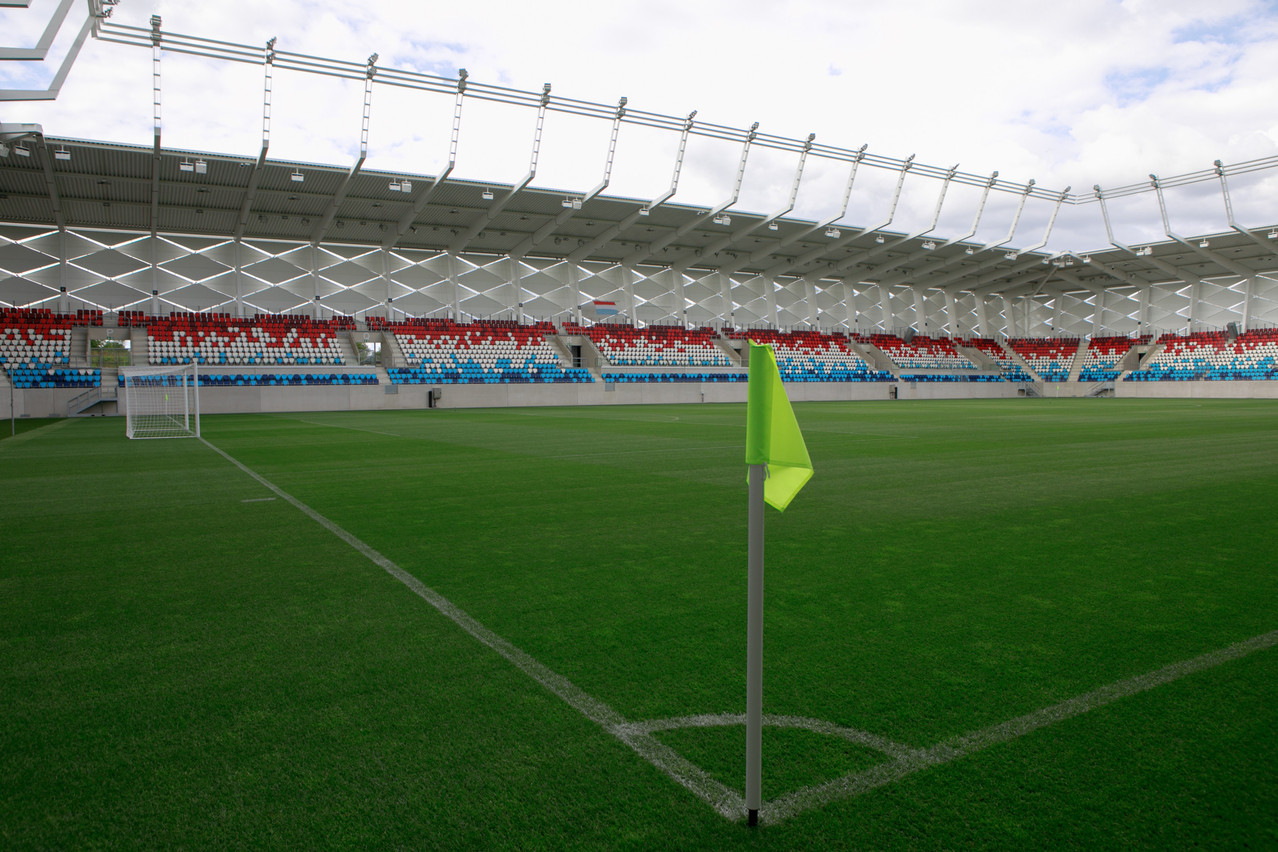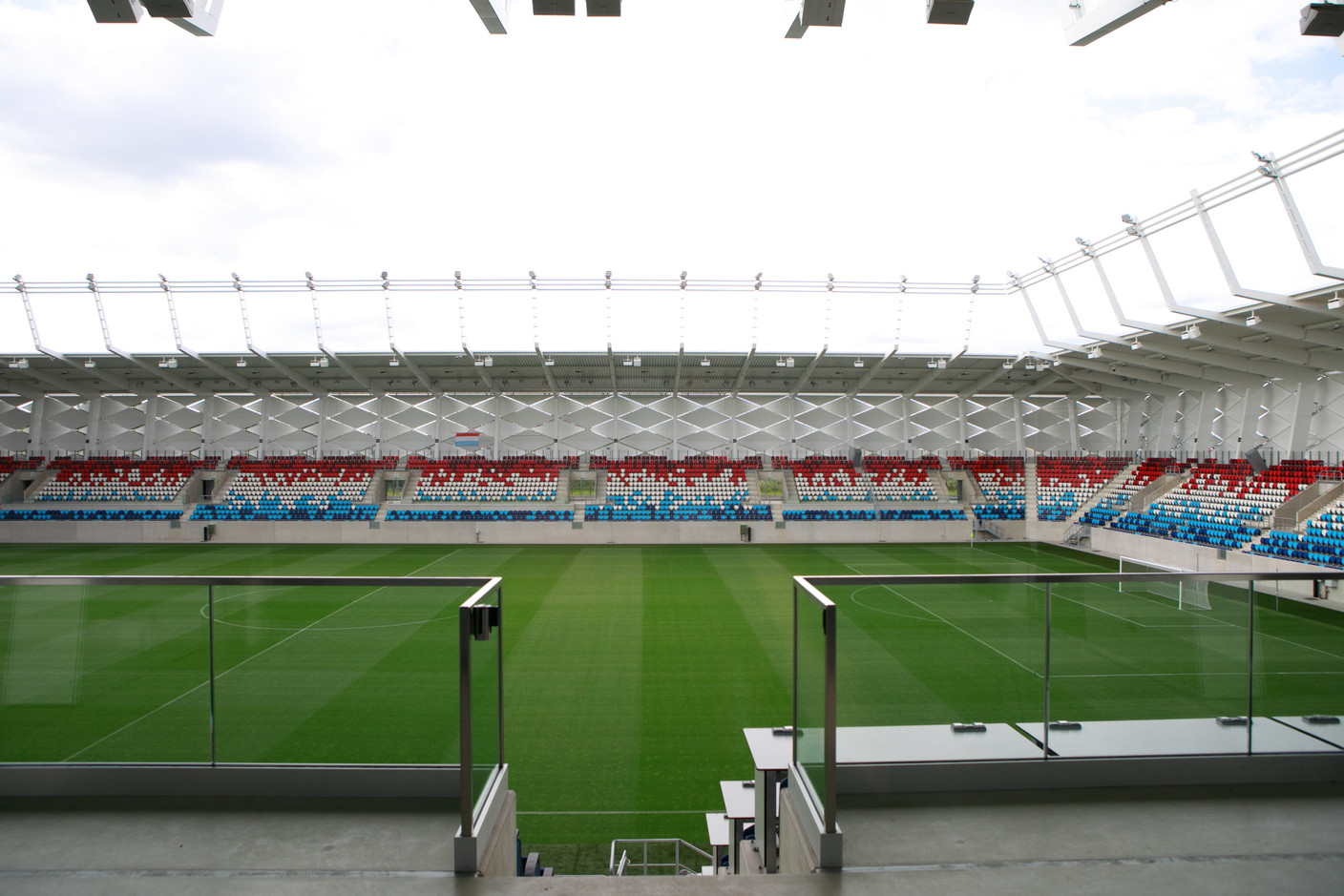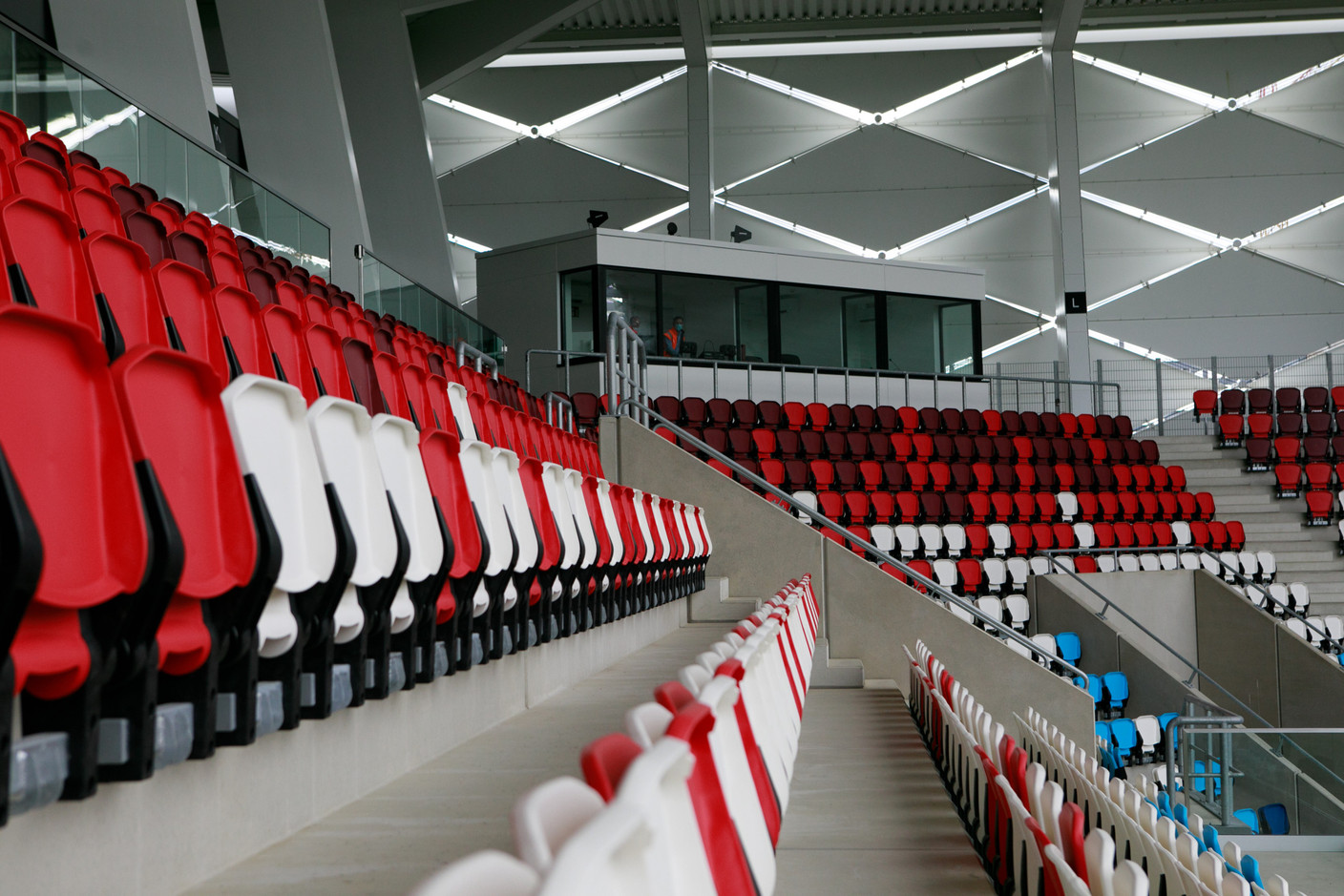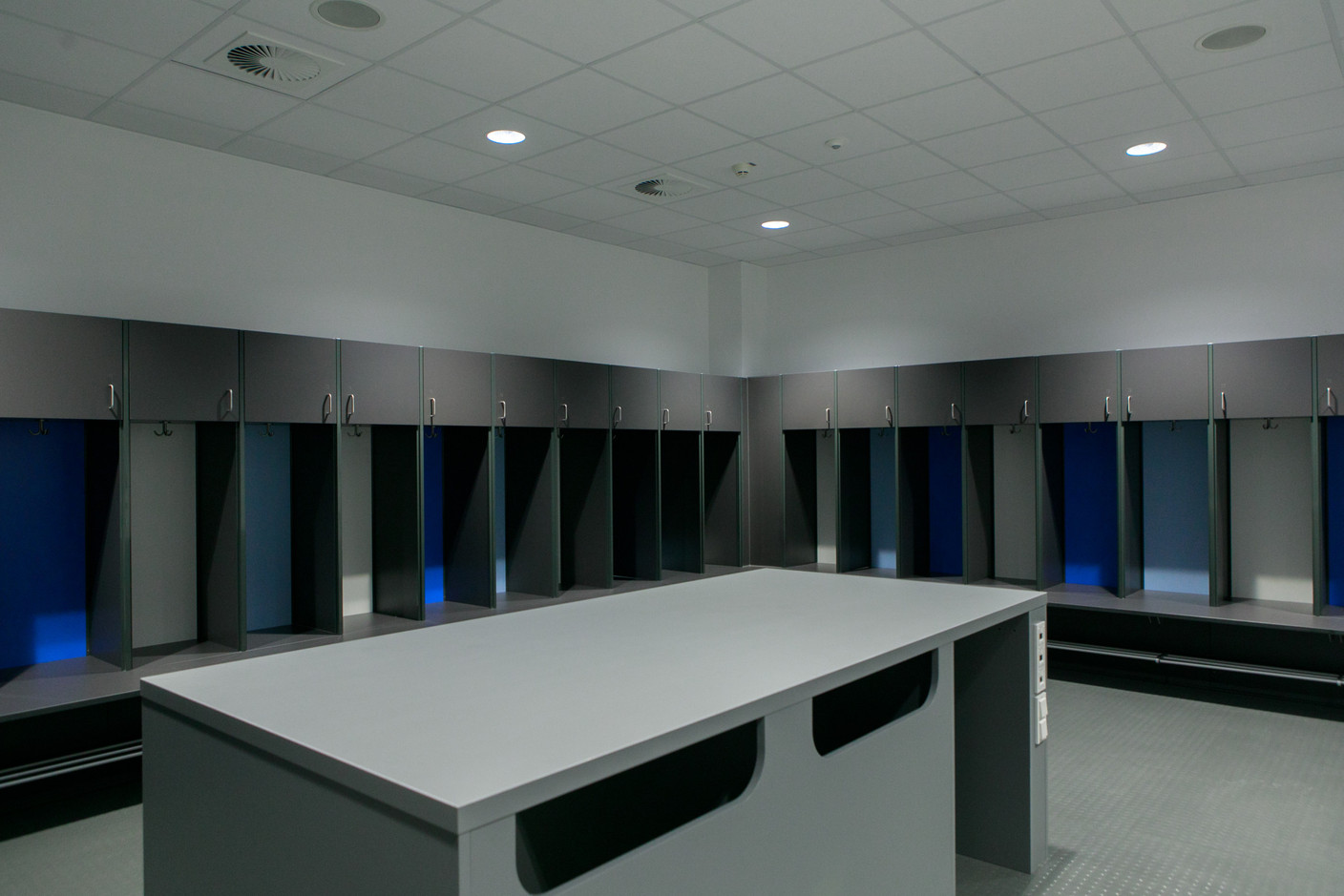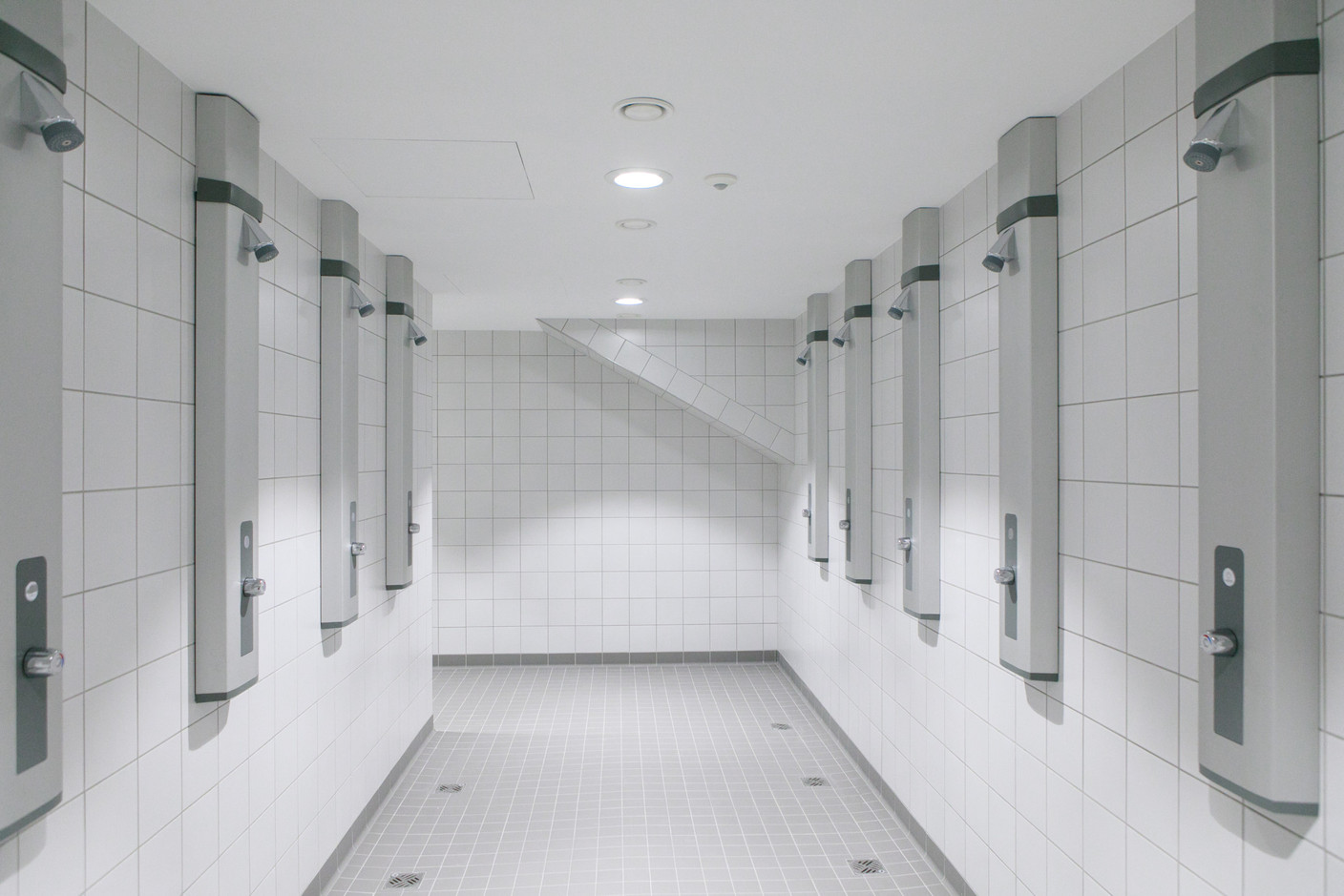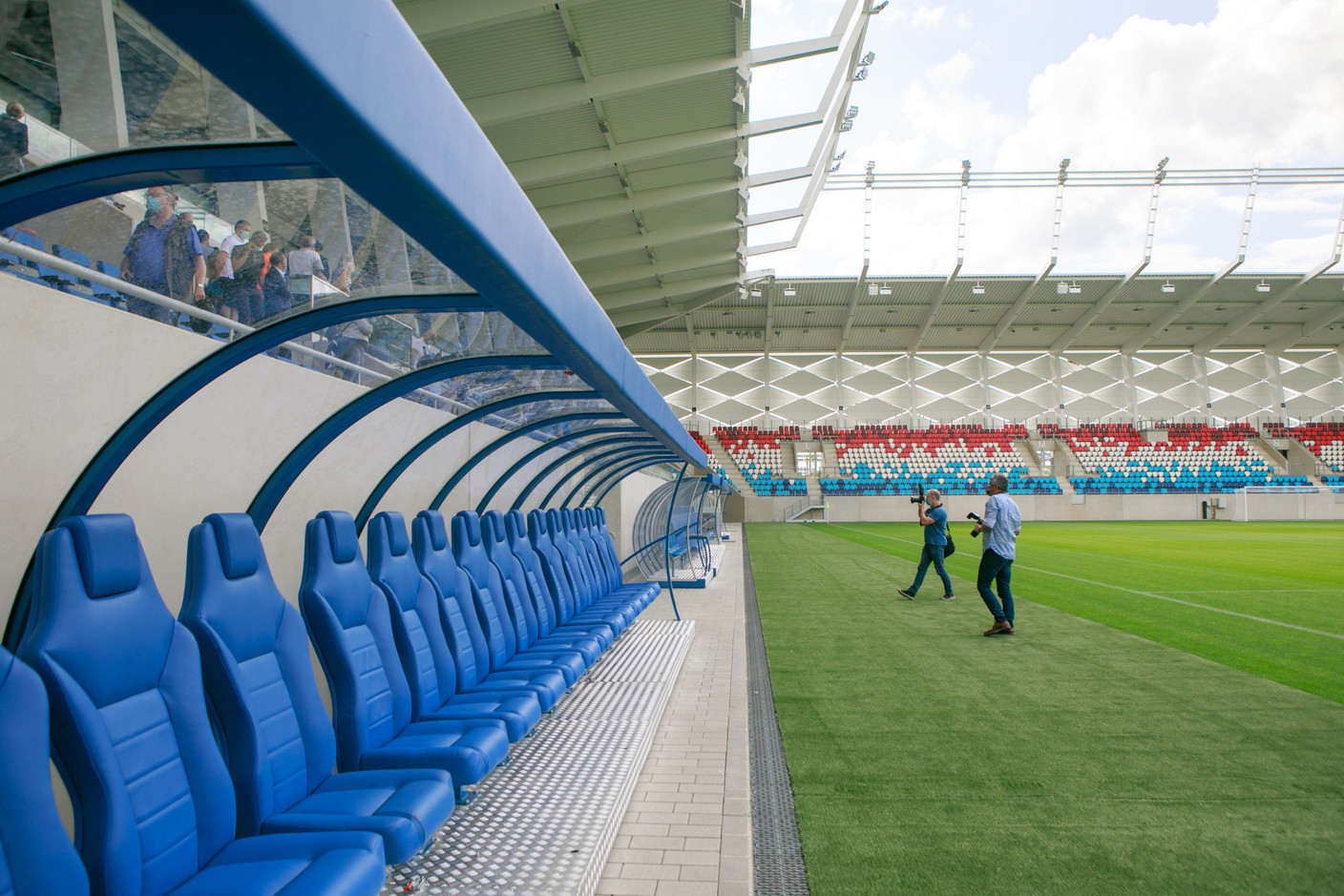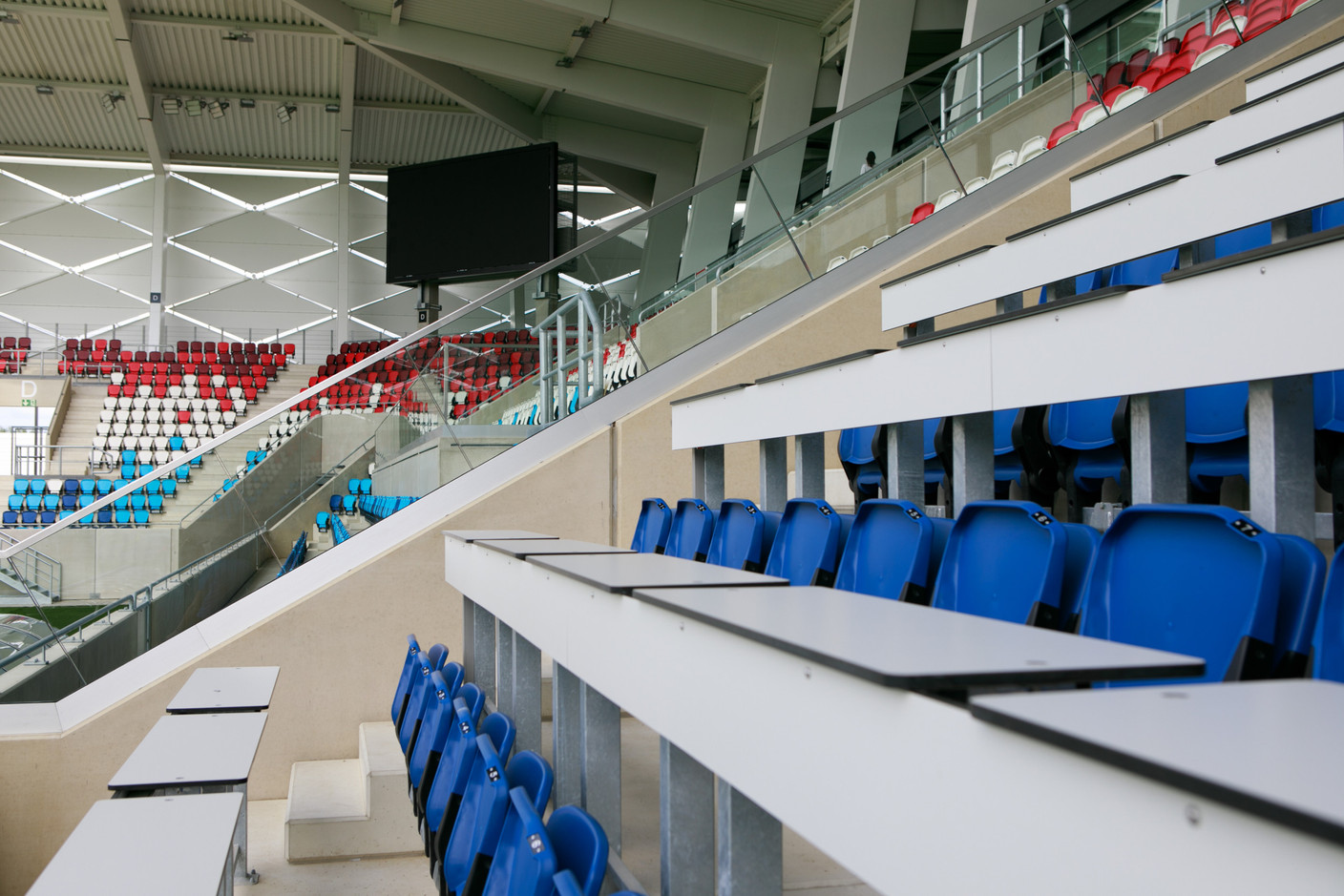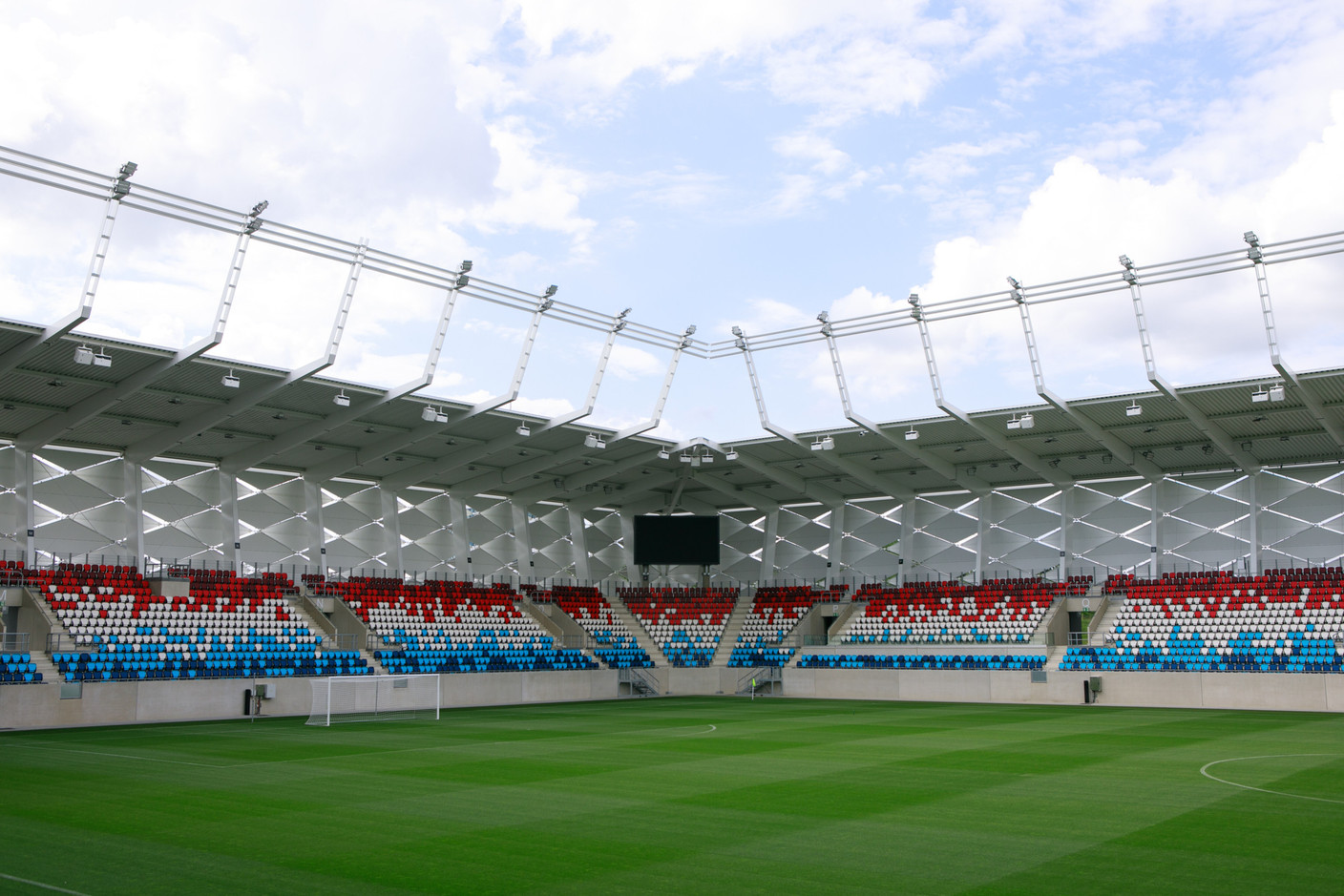After playing in the Josy Barthel Stadium, often considered among the most outdated on the continent, the Roud Léiwen finally have fresh digs: the Stade de Luxembourg.
Here are ten things to know about the new stadium, which will also host rugby, before today’s World Cup qualifier (kickoff at 8:45 pm).
1. Almost two years’ delay
When construction work on the Stade de Luxembourg began in the summer of 2017, it was planned that everything would be completed by October 2019. This makes the new stadium 23 months late. The pandemic has obviously slowed the process, not to mention various shortages of materials.
“Do you know many construction projects that are not delayed?” quipped one of the pundits of the Luxembourg Football Federation (FLF) recently, happy to see the stadium finally ready.
2. No more DIY quick-fixes
The Stade de Luxembourg is classified by UEFA, the European football confederation, as category 4, i.e. the highest category. This means that it meets all the criteria of the most advanced European stadiums, though with a lower capacity.
Josy Barthel Stadium, which previously housed the the national team, was a category 3 venue. Even that, however, was a stretch: some “tinkering”, as FLF general secretary Joël Wolff put it, had been necessary to meet that level. And not all the tinkering was cheap.
“Since we had no other possible stadiums, UEFA gave us a temporary authorisation to play at the Barthel. This permission was extended each time,” explained Wolff earlier this week.
In short, it has been years, even decades, since Luxembourg had a stadium that was truly up to standard.
3. Official inauguration: 25 September
Somewhat bizarrely, although the Roud Léiwen will play their first official match this evening at the Stade de Luxembourg (and even a second one against Qatar next week), the official inauguration is set only for 25 September.
Indeed, the protocols required for an official qualifying match--such as the one against Azerbaijan--leaves little room for an inaugural ceremony.
Another reason for the delay is that the City of Luxembourg wanted to offer an open day to the public immediately following the inauguration. Thus, on 26 September, which is a Sunday, anyone can come and visit the stadium.
4. A capacity of 9,443 spectators
It has often been reported that the Stade de Luxembourg will be able to accommodate 9,385 spectators. But according to the official handbook for the new stadium, the figure is now 9,443. The seats are all covered, unlike at the Josy Barthel.
Tonight, there will be far fewer spectators because, according to the health restrictions currently in place, only 2,000 people will be allowed entry: 1,650 spectators and 350 workers (security, reception, journalists, etc.)
5. Heated and hybrid
The playing surface of the SdL is not grass. Or rather, it is. Kind of. It’s a hybrid pitch, combining natural grass and synthetic microfibres. This is not a first in Luxembourg; some clubs already play on such a pitch.
However, the new stadium is the first in Luxembourg to have a heating system underneath the turf. This means that the pitch is always perfectly usable, even when it is very cold. This technology has become standard in all major European football leagues.
6. There’s even a “prison”
This must also be a first for us: the Stade de Luxembourg has its own “prison”, i.e., two cells (with toilets), which will be managed by the police. Troublemakers will be accommodated here.
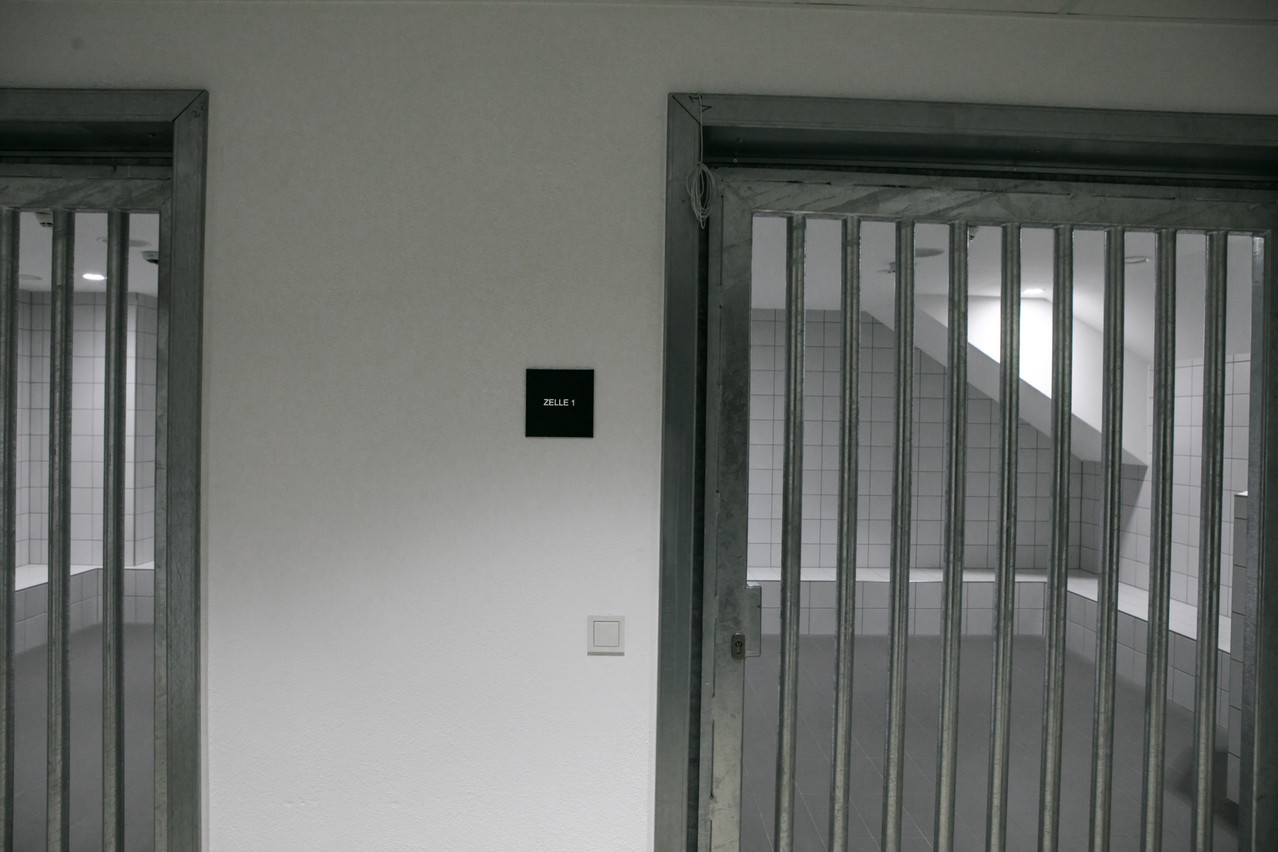
The two cells in a corner of the SdL . Photo: Matic Zorman / Maison Moderne
7. The opponent? Not Brazil
Some may remember that former sports minister (LSAP) mentioned, upon returning from the Rio Olympics in 2016, the possibility of inviting the Brazilian national team--the Seleção--to Luxembourg as part of a gala match for the opening. But there will be no sign of Neymar and his teammates tonight.
Unfortunately, busy international schedules don’t leave room for such matches today. And this is especially true for a small nation like Luxembourg.
8. With VAR (sometimes)
Another first in Luxembourg: the famous VAR (video assistant referee) will be used this evening, helping the referee call the game. In these final days, the refs have been working hard to ensure that everything is in place.
“UEFA is present on site, with its own staff and bus--in which the disputed actions will be examined--which will be linked to the images of the production cameras,” explained Wolff. But all these people will leave once the match is over, not to return until the team’s next qualifying match (also to be played here).
It is therefore not foreseen that VAR will be used for other (domestic) matches.
9. Almost 200 surveillance cameras
There are 189 toilets and urinals in the Luxembourg stadium, but one figure is much more impressive. There are 150 security cameras scattered around the stadium, as well as 46 outside the stadium.
10. No big concerts
This will disappoint some people: unlike many other modern venues, the Stade de Luxembourg won’t host big concerts by major international artists.
In response to a parliamentary question in 2016, the former sport minister, Schneider, explained that the stadium was intended only for football and rugby matches. “Large-scale concerts requiring the installation of a stage” were not part of the plan.
This article in Paperjam. It has been translated and edited for Delano.
